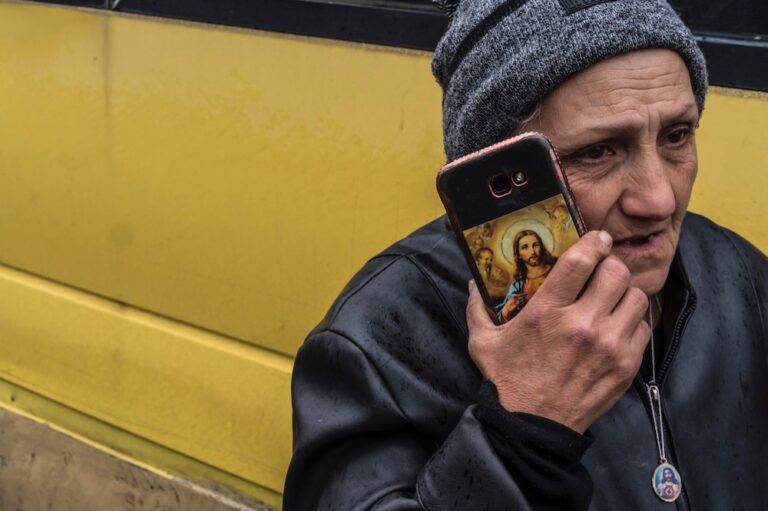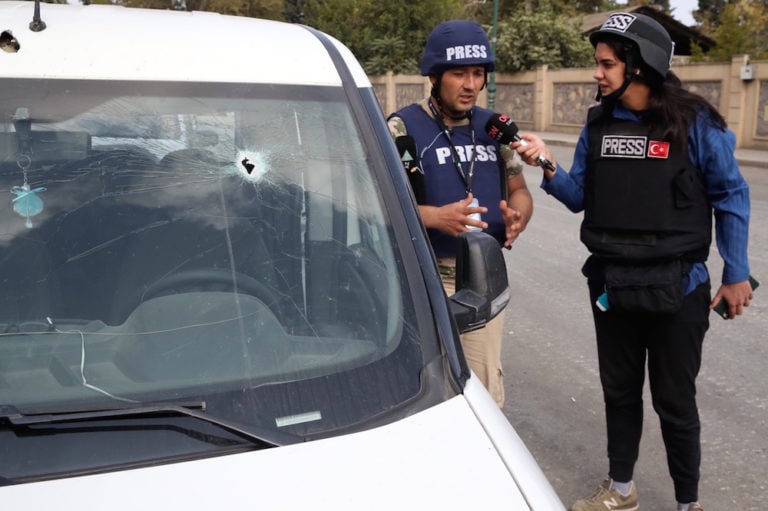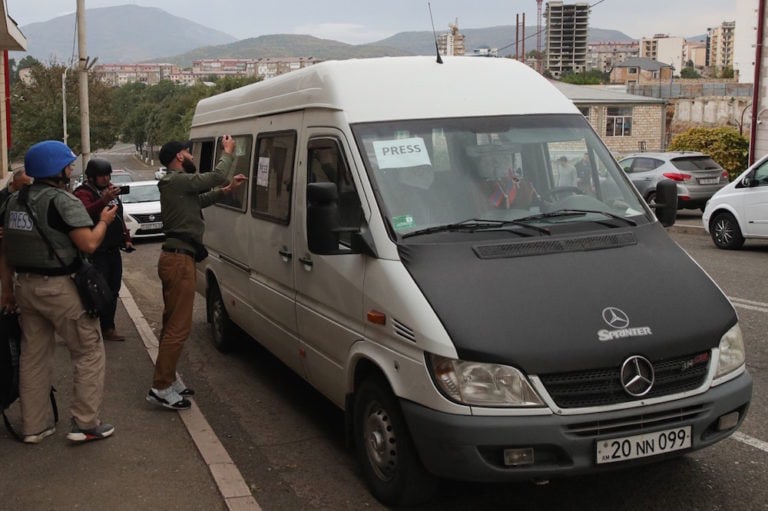(HRW/IFEX) – The following is an abbreviated version of a 2 March 2008 Human Rights Watch press release: Armenia: Police Beat Peaceful Protesters in Yerevan State of Emergency Restricts Civil Liberties and Free Press (New York, March 2, 2008) – Armenian police on March 1 used excessive force and violence to disperse demonstrators protesting peacefully […]
(HRW/IFEX) – The following is an abbreviated version of a 2 March 2008 Human Rights Watch press release:
Armenia: Police Beat Peaceful Protesters in Yerevan
State of Emergency Restricts Civil Liberties and Free Press
(New York, March 2, 2008) – Armenian police on March 1 used excessive force and violence to disperse demonstrators protesting peacefully against recent election results, Human Rights Watch said today. Following the crackdown on demonstrators, President Robert Kocharian decreed a state of emergency in Yerevan, the capital, until March 20, 2008. There was a heavy police presence overnight in central Yerevan.
According to Arminfo news agency, the police have surrounded and sealed off the opposition news agency A1+, preventing its employees from entering or leaving the building.
“The Armenian government should refrain from using violence and make clear that it won’t tolerate excessive use of force by police,” said Holly Cartner, Europe and Central Asia director at Human Rights Watch. “A political crisis doesn’t give the government carte blanche in how it responds to demonstrators.”
Several witnesses told Human Rights Watch that at 6.30 a.m. on March 1, Armenian special police forces violently dispersed a rally protesting against alleged electoral fraud that had entered its 11th day on Yerevan’s Freedom Square, beating demonstrators with truncheons and iron bars. Some were fleeing when police attacked them. Dozens are reported to have sustained severe injuries and more than 100 protestors were arrested. Armenia’s first president Levon Ter-Petrosian, who was the main opposition challenger in last month’s presidential poll, remains under effective house arrest as police cordoned off his home. Also on March 1, at least six opposition leaders were detained for organizing illegal demonstrations.
Kocharian’s press office reported that under the state of emergency public gatherings and strikes will be banned and freedom of movement as well as non-government public broadcasts will be severely curtailed. Internet and satellite reception has been cut in Yerevan.
Later in the morning, protesters gathered in front of the French Embassy in downtown Yerevan. Their numbers grew substantially during the day, as did the police presence. A demonstrator told Human Rights Watch that police were equipped with rubber truncheons, electric-shock devices, and water cannons. The rally was still continuing in front of the embassy when the state of emergency was announced after police were reported by news organizations to have fired in the air to disperse the demonstrators.
Opposition demonstrations followed the February 19 presidential election, after the Central Election Commission declared Prime Minister, Serzh Sargsian the winner with 53 percent of the vote. According to official tallies, opposition challenger Ter-Petrosian won 21.5 percent of the vote. Tens of thousands of Ter-Petrosian supporters took to the streets in downtown Yerevan on February 20 to protest the declared election results and what they believed to have been electoral fraud ( http://hrw.org/english/docs/2008/02/21/armeni18128.htm ). The protests continued peacefully on Freedom Square for the next 10 days, with some demonstrators camping out on the square in tents (. . .).
At about 6:30 a.m. on March 1, a few hundred opposition supporters were in their tents when police arrived and started to disperse them. Information about approaching interior troops began to reach demonstrators shortly after 6:00 a.m. A 30-year-old eyewitness, who requested anonymity for fear of retribution, told Human Rights Watch that several rows of Special Forces in riot armor, with helmets, plastic shields and rubber truncheons, started approaching from the left and right sides of Freedom Square. The witness said that police, without prior warning, sprayed water and descended on the demonstrators, using rubber truncheons and electric prods (. . .).
The police operation lasted for about 15 to 20 minutes, but as news about it spread, more people started heading towards the square. At least two eyewitnesses described separately to Human Rights Watch how police attacked, beat, and detained groups of 20 to 30 people who attempted to gather near the square (. . .).
Postanjian told Human Rights Watch that in one case a journalist, Gagig Shanshan, was arrested and held in Zeitun district police station in Yerevan, but several hours after his arrest his lawyer still had no access to him.
“Even in a state of emergency, those in detention and facing criminal charges are entitled to due process rights, and should have access to a lawyer,” said Cartner.
Article 9 of the International Covenant on Civil and Political Rights and Article 5 of the European Convention on Human Rights, to which Armenia is a party, set out the safeguards which should accompany those deprived of their liberty, and access to a lawyer is one of those safeguards.
Government information sources showed police footage of arms stockpiles that allegedly were discovered at Freedom Square after the demonstration was dispersed, including truncheons, guns, grenades, and gas capsules. The report was vehemently denied by the opposition.
“The Armenian government prides itself on having a democratic image,” said Cartner. “Beating peaceful demonstrators is inconsistent with that image and violates its obligations under human rights law.”
For the full text of this press release, see : http://hrw.org/english/docs/2008/03/02/armeni18189.htm
To read Human Rights Watch’s news release on election-related violence in Armenia, please visit:
http://hrw.org/english/docs/2008/02/21/armeni18128.htm


